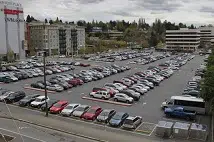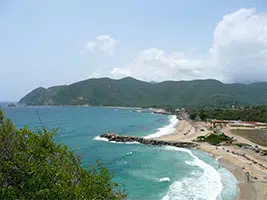 The term playón is the augmentative of beach : that is, it is the adjective that increases what is denoted by said concept. A beach, meanwhile, is a shore with a flat surface or a large space that can be used for various uses .
The term playón is the augmentative of beach : that is, it is the adjective that increases what is denoted by said concept. A beach, meanwhile, is a shore with a flat surface or a large space that can be used for various uses .
Generally, the notion of beachón is used with respect to the second mentioned meaning of beach. A beach is usually a wide and open place that, due to its characteristics , facilitates the development of certain actions.
The site used for parking all types of vehicles can be called a playón. Institutions that have cars, motorcycles, vans, trucks, etc., usually have a playground. That is the usual case of fire stations and hospitals , to mention two possibilities.
A sports beach , on the other hand, is a sector that allows the practice of sports . They often have certain infrastructure (such as exercise machines, soccer goals, or basketball hoops) so that users can train and compete.
Sometimes the playgrounds adapt to different contexts depending on the moment. Fairs or circuses can be set up in them, for example, which are then removed without leaving traces of their passage through the area since they are traveling.
In Colombia , El Playón is a municipality that is part of the Metropolitan province (department of Santander ). About 12,000 people live there.
The Playón de Santander has an area of 467.6 square kilometers, its average temperature is around 24 degrees Celsius and it is located 41 kilometers from the municipality called Bucaramanga , the capital of Santander. Regarding its structure, we can say that it is divided into thirteen cadastral paths (among which are Límites, Arrumbazón, Santa Bárbara and El Pino), the two towns of San Pedro de la Tigra and Betania, and a population center called Barrio Nuevo. .
 Towards the four cardinal points we can find other municipalities that border El Playón: to the north, Cáchira; to the east, Surata; to the south we have Rionegro and Matanza; To the west there are also parts of Cáchira and Rionegro. The Playón is located in the Lebrija basin , a river that merges with the Playonero and the Cachirí and becomes Cáchira del Sur. Almost all of El Playón's drainages are tributaries of the Cáchira subbasin.
Towards the four cardinal points we can find other municipalities that border El Playón: to the north, Cáchira; to the east, Surata; to the south we have Rionegro and Matanza; To the west there are also parts of Cáchira and Rionegro. The Playón is located in the Lebrija basin , a river that merges with the Playonero and the Cachirí and becomes Cáchira del Sur. Almost all of El Playón's drainages are tributaries of the Cáchira subbasin.
A large number of the forests that we can find in El Playón are located on the right of the Playonero River in the northeast of the municipality, at an altitude ranging from 1200 to 2800 meters above sea level. Since they must be conserved and protected, local authorities must carry out constant work. On the western side, that is, to the left of the river, there are some relict forests (vestiges of ancient forests), whose degree of deterioration is high and are between 600 and 1000 meters above sea level.
Venezuela , finally, features a city called El Playón . It is located in the Santa Rosalía municipality, in turn belonging to the state of Portuguesa .
To the north of the city El Playón are the Esteller and Villa Bruzual municipalities; to the south, Papelón; to the east, Cojedes; To the west it also borders Esteller. The history of this city tells that it was founded largely by foreign people fleeing the Spanish-American wars of independence, various conflicts that took place in the first half of the 19th century in the Spanish colonies .
Regarding its name, it is due to the fact that its soil is made up of sand of the same type that we find on a sea beach. The reason for such a characteristic is that the Portuguesa River passed through the area.
